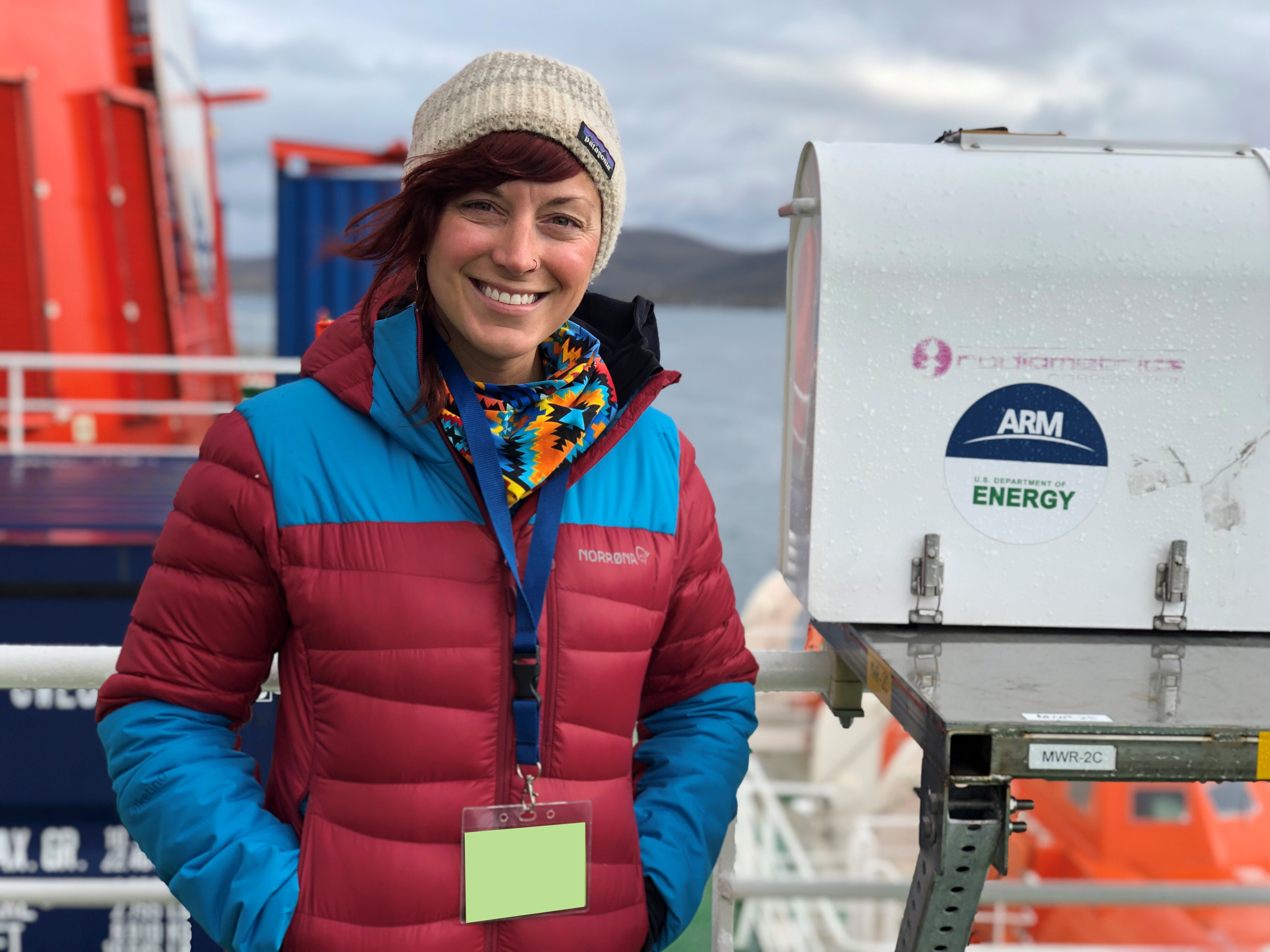MOSAiC Data Reveal Arctic Seasonal Atmospheric Processes
Published: 25 July 2022
Direct observations reported in new Nature Communications paper
The following is based on a story by Anne Manning, Colorado State University.

While climate change is taking effect everywhere on Earth, the Arctic Circle is feeling those effects most of all, in the form of glacial melt, permafrost thaw, and sea-ice decline.
Key players in climate change include the clouds that cover the Earth’s surface and microscopic, airborne aerosols called ice-nucleating particles (INPs), which seed the formation of ice in those clouds. This dance of ice nucleation, cloud cover, and heat has a significant role in climate. But until recently, Arctic INPs were scarcely studied in this region.
Jessie Creamean is a research scientist who studies INPs at Colorado State University. She also oversees an instrument providing INP measurements for the U.S. Department of Energy’s (DOE) Atmospheric Radiation Measurement (ARM) user facility.
With instrument funding from ARM and science funding from DOE’s Atmospheric System Research (ASR), Creamean led an INP campaign during the Multidisciplinary Drifting Observatory for the Study of Arctic Climate (MOSAiC) expedition.
MOSAiC was an international research effort in which hundreds of scientists collected unprecedented environmental data sets over an entire annual cycle in the central Arctic Ocean. Locked in an ice floe aboard a German icebreaker, Creamean’s team gathered thousands of samples of air, seawater, sea ice, and snow, and brought home the physical evidence needed to determine precisely how ice nucleation and clouds over the Arctic Ocean ebb and flow over time.
For Creamean and her team, MOSAiC observations generated a new data set of size-resolved INP concentrations. The team analyzed INPs collected with a rotating drum aerosol sampler on the icebreaker R/V Polarstern from October 23, 2019, to October 1, 2020.
The goal? Report never-before-seen observations of INPs in the central Arctic, away from land-based locations that are influenced by terrestrial sources of aerosols.
Now, in an open-access paper in Nature Communications, Creamean and her colleagues report their direct observations of size-resolved INPs in the central Arctic, spanning the entire sea-ice growth and decline cycle. Their results show a strong seasonality of these particles, with lower concentrations in the winter and spring, and enhanced concentrations during summer melt from local biology.
Clouds and Sea Ice
“The reason why we care about these measurements in the central Arctic is that clouds play an important role in the energy budget there,” says Creamean. “Clouds have a big impact on sea-ice decline and sea-ice growth and precipitation up in this region.”
“Understanding how these clouds form over the course of the year is important,” continues Creamean. “Contrasting Arctic conditions affect clouds as the particles we see in the air change throughout the course of the year. You have 24 hours of light to 24 hours of darkness. You have ice, and you have melt. You have microbes that are active in the summer, and you have deep freezes in winter.”
The work of Creamean and her colleagues, including data sets and analysis of seasonal atmospheric processes in the Arctic, is already being used to improve the accuracy of earth system models. The team’s work is freely available on ARM Data Discovery.
Looking ahead, Creamean and colleagues at the University of Michigan and the Swiss Federal Institute of Technology in Lausanne will use ARM data and other observations in an ASR-funded project to better understand aerosol-climate processes, including aerosol composition and physical and microphysical properties of INPs, in the central Arctic.
You can read the new paper on the Nature Communications website.
Keep up with the Atmospheric Observer
Updates on ARM news, events, and opportunities delivered to your inbox
ARM User Profile
ARM welcomes users from all institutions and nations. A free ARM user account is needed to access ARM data.


















